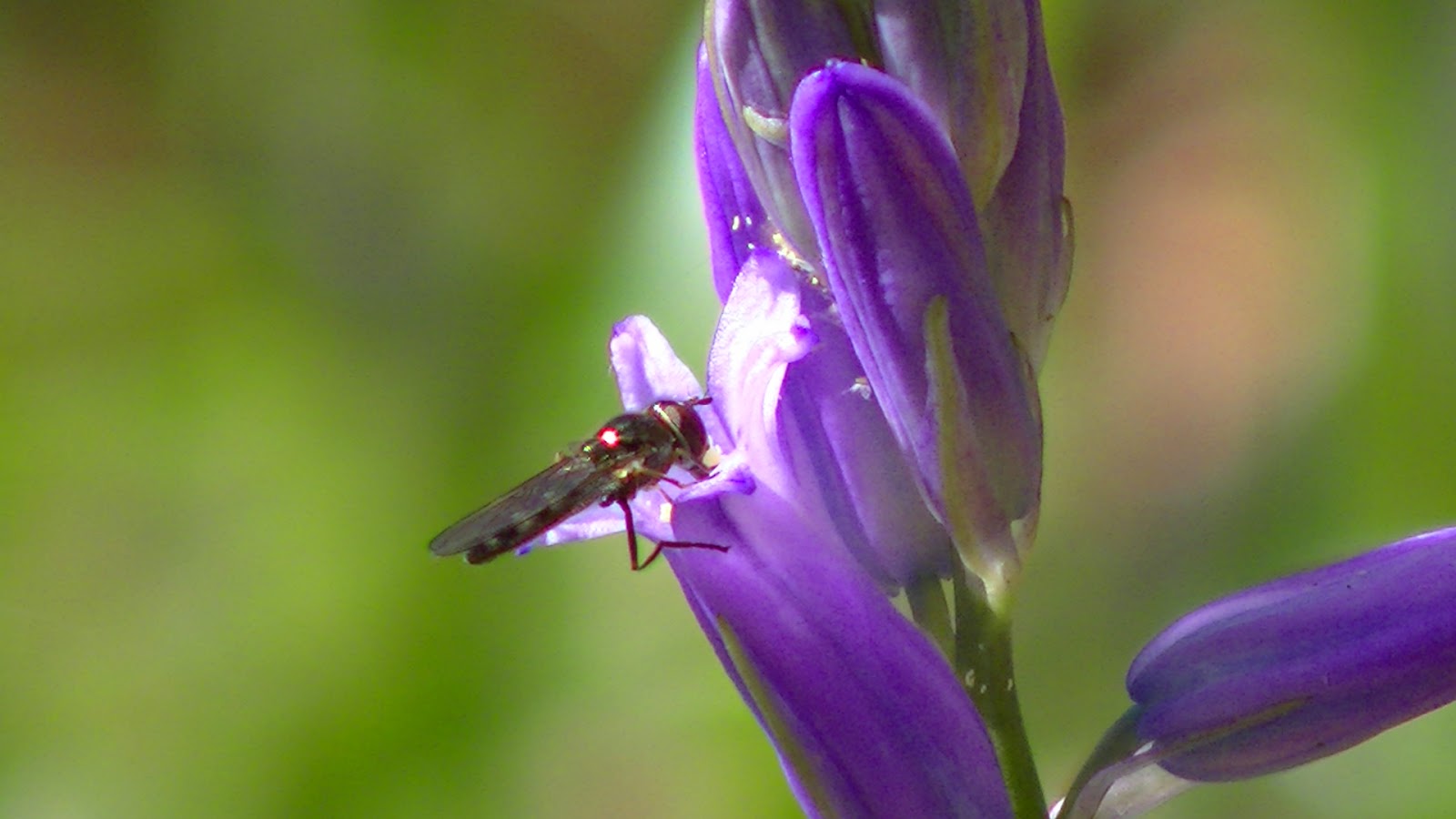This morning I took advantage of the good weather, and went for a walk in my local woods. Whilst it was nice to hear an array of birds singing all around me, and catch the occasional glimpse of a Muntjac darting through the trees, it's the plants which are really starting to steal the show as Spring tightens its grip.
The trees are getting green again- a welcome relief from the dull, bare branches that have haunted our fields and forests since Autumn. Bluebells are starting to blossom as well. There aren't many that have done so here yet, but those that have are already attracting a range of insects to their beautiful blue-violet petals. Wood Sorrel, Lesser Celandine, Primrose, Dog-Violet, Stitchwort, Cowslip and Speedwell are among the other plants I came across on my amble through the woods earlier.
 |
| Insects are already visiting newly blossomed bluebells |
I've had some 'hare-raising' encounters over the past month, with testosterone levels in the male bucks going through the roof. Thankfully the Hares have stopped paying much attention to me and started paying a lot more attention to each other, allowing me to get some decent shots of them charging across the airfield and bashing each other on the head in very short scrapes. Unfortunately I still haven't seen any prolonged bouts of boxing yet, but I might still get the chance as their mad behaviour continues over the next couple of weeks.
When I get some time, I'll put together a short video of my local Hares and post it on this blog for you to see.